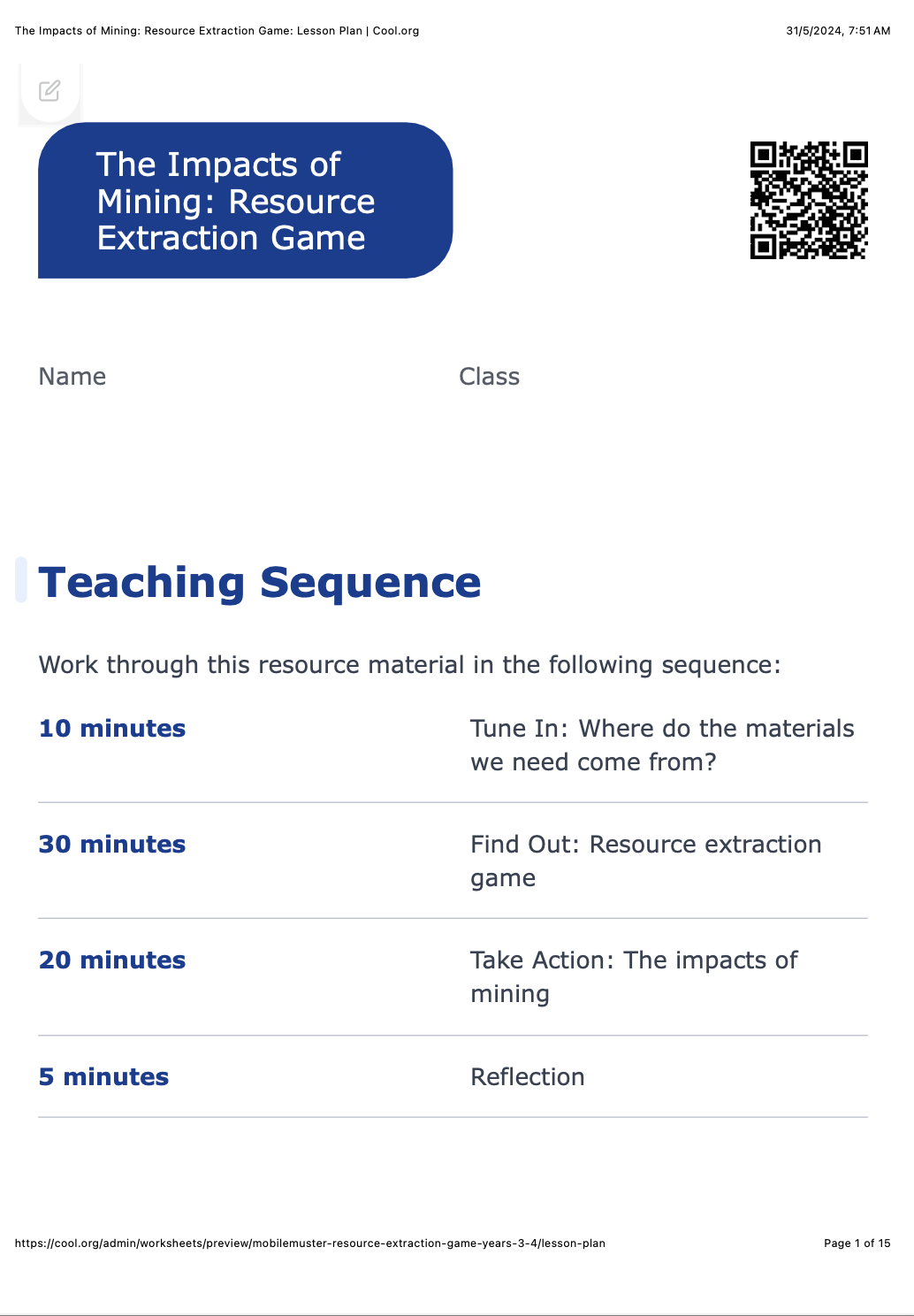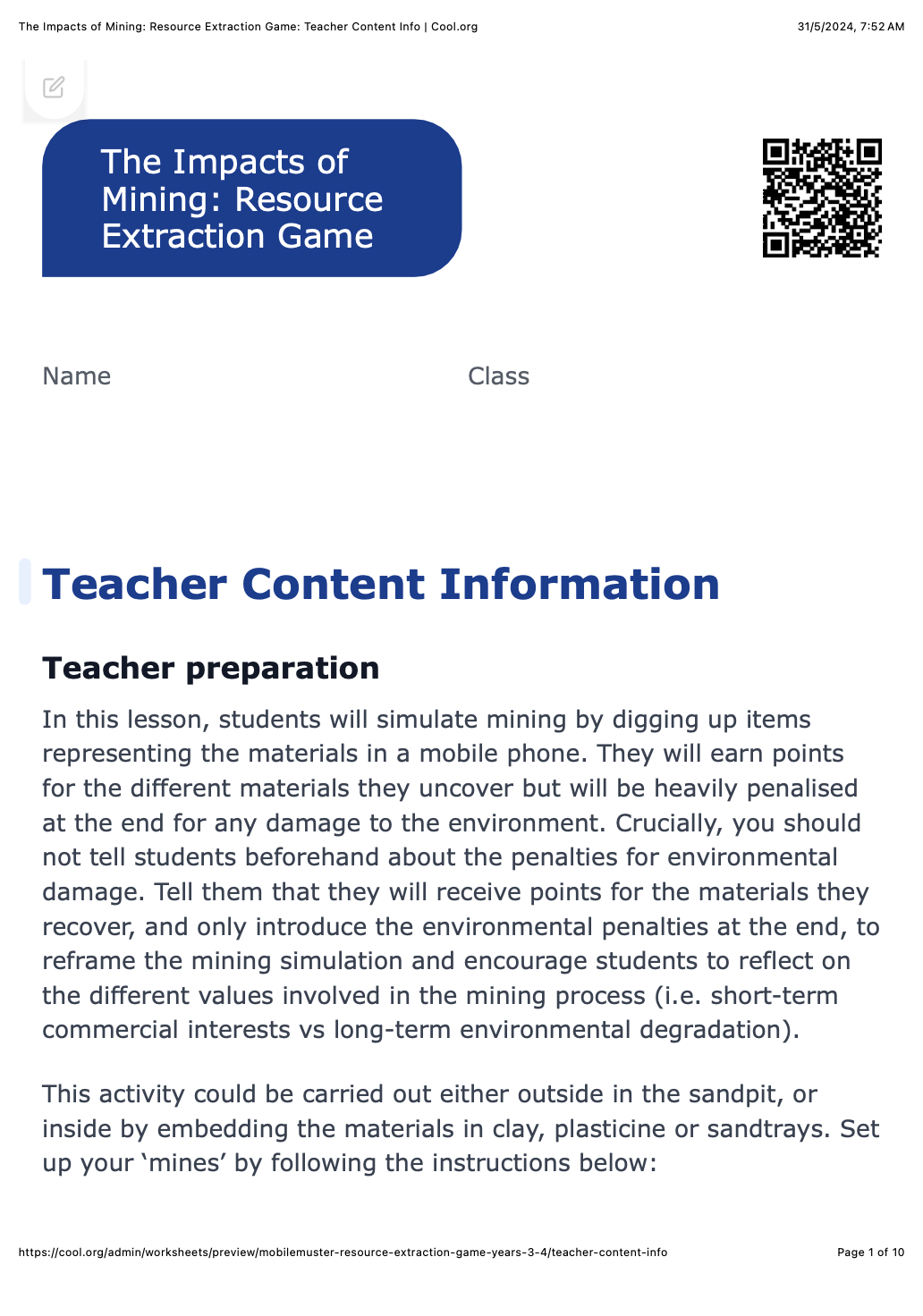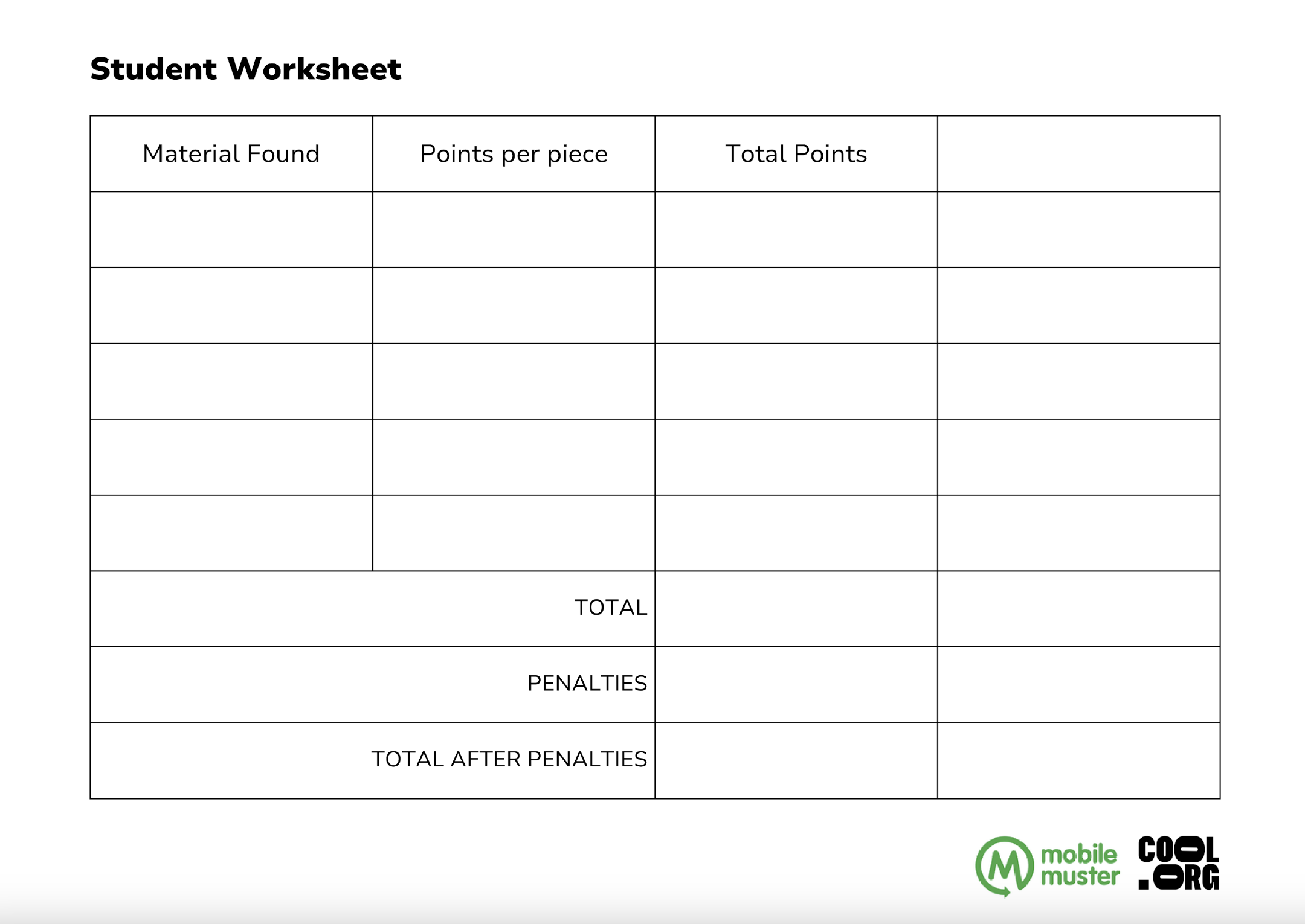Lesson summary
This lesson is part of a unit that explores the life cycle of mobile phone materials through game-based learning. Students use a game to understand the process of mining, using a hands-on activity to explore the impact of finding, extracting and transporting raw materials. Students will reflect on the impact of mining on the environment and consider the importance of recycling materials to minimise these impacts.
Learning intentions:
Students will...
- understand resource scarcity, mining and its environmental impacts as well as the value of rare, non-renewable materials, and the importance of respecting them
- investigate the mining process, from exploration and surveying to transportation.
Success criteria:
Students can...
- outline where the materials used in mobile phones come from and how they are obtained
- describe the environmental impacts caused by extracting resources
- work collaboratively to solve problems.
Lesson guides and printables
Curriculum links
Select your curriculum from the options below.
Lesson details
Skills
This lesson is designed to build students’ competencies in the following skills:
- collaboration
- ethical understanding
- global citizenship
- problem-solving
Curriculum mapping
Australian Curriculum (v9.0) content descriptions
Year 4 Humanities and Social Sciences:
- sustainable use and management of renewable and non-renewable resources, including the custodial responsibility First Nations Australians have for Country/Place. (AC9HS4K06)
Years 3 & 4 Design and Technologies:
- describe how forces and the properties of materials affect function in a product or system. (AC9TDE4K02)
Year 4 Science:
- examine the properties of natural and made materials including fibres, metals, glass and plastics and consider how these properties influence their use. (AC9S4U04)
Relevant parts of achievement standards
Year 4 – Humanities and Social Sciences: Students can describe the importance of environments, and sustainable allocation and management of resources.
Years 3 & 4 – Design and Technologies: Students can describe how people design products, services and environments to meet the needs of people, including sustainability.
Year 4 – Science: Students can relate the uses of materials to their properties.
NSW Syllabus outcomes: GE2-2, GE2-3, ST2-13MW,
General capabilities: Critical and Creative Thinking, Personal and Social Capability
Cross-curriculum priority: Sustainability
Level of teacher scaffolding: High – explain new concepts, and set up and facilitate intensive activities.
UN Sustainable Development Goals
UN SDG 12: Ensure sustainable consumption and production patterns
- Target 12.5: By 2030, substantially reduce waste generation through prevention, reduction, recycling and reuse.
Resources required
- Device capable of displaying audiovisual material
- Materials to make model mines:
- a sandpit that can fit the whole class OR 1 sand-filled tray per 4 students
- a range of ‘mining tools’ for each group, which will vary depending on the ‘mine’ you are using. Sandpits could have toy diggers, plastic spades, wooden poles as drills, etc. Whereas clay/plasticine might require toothpicks, tweezers, skewers, forks, spoons and straws or pipes as drills
- toy trucks or buckets for transporting materials for processing
- 2 x Buckets/containers
- 5 x 5c pieces
- 5 x 10c pieces
- 5 x 20c pieces
- 5 x 50c pieces
- 5 x 1 dollar coins
- 5 x black rocks
- 5 x grey rocks
- 5 x small magnets
- 5 x aluminium foil balls
- 5 x marbles.
Note: The above materials to make model mines are only suggestions. You could substitute these items with any other safe items such as different coloured pieces of plastic, cut-up metal strips from a science supply company, marbles, or even chocolate money!
Additional info
This lesson has been developed as part of Planet Ark’s National Recycling Week. Following this lesson plan is an ideal way for your school to take part in MobileMuster. You’ll be joining thousands of amazing teachers in making a difference and creating positive environmental change. Take part in the Schools Recycling Right Challenge for Planet Ark’s National Recycling Week. Register your lesson or other activities today!
Related Professional Learning
How to Teach Sustainability with Hope
Quick Summary: This course is for both primary and secondary teachers of all subjects, but especially for English, Science, Humanities and Geography teachers who are covering climate change and the cross-curriculum priority of sustainability.




Welcome back!
Don't have an account yet?
Log in with:
Create your free Cool.org account.
Many of our resources are free, with an option to upgrade to Cool+ for premium content.
Already have an account?
Sign up with:
By signing up you accept Cool.org's Terms and Conditions(Opens in new tab) and Privacy Policy(Opens in new tab).